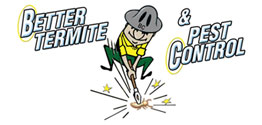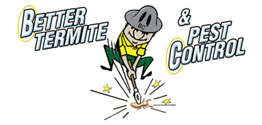Carpenter Ants
Get A Free Estimate
No matter where you live in the United States, carpenter ants are pests that you’ll probably encounter sooner or later. While they may not seem particularly hazardous, they can be a serious threat to your property and your health. Knowing more about carpenter ants will help any homeowner to combat the problem.
Carpenter Ants at a Glance
One of the most common insects in America, carpenter ants are easy to spot due to their distinctive appearance. Carpenter ants have robust black bodies, narrow thoraxes and long legs. They measure up to half an inch in length in the right environments and travel single file in meandering lines.
Why These Critters Are Bad News
While they’re not as dangerous as termites, carpenter ants can still do a number on a house. They bore their way through wood and establish complex networks of tunnels, thereby damaging both load-bearing and cosmetic lumber. They can also cause nasty bites that irritate human skin.
How Carpenter Ants Enter a Home
Carpenter ants typically gain access to a structure through cracks in the foundation and gaps in the siding. Once inside a building, they set up shop behind the drywall inside the soft pine framing studs. They require a moderately humid environment for their eggs to hatch.
5 Classic Signs of an Infestation
There’s a good chance that you have a carpenter ant problem if you observe any of the following:
1.) Odd Accumulations of Sawdust
Unlike termites, carpenter ants don’t actually eat the wood that they’re tunneling through. As such, they leave behind tell-tale piles of fine sawdust. You’ll typically find sawdust produced by carpenter ants next to crown molding, floor transitions and window sills.
2.) Holes in Wood Surfaces
Thanks to their powerful mandibles, carpenter ants can chew through a variety of wood species. In many cases, they dig directly into visible wood surfaces to create their tunnel complexes. Carpenter ant holes tend to be clustered and resemble pitting.
3.) Rustling Sounds Behind the Walls
Despite their size, carpenter ants can be quite noisy when enough of them are concentrated in one area. If there are carpenter ants hiding in your walls, you’ll hear a sound similar to that of paper being crumpled.
4.) Hollow-Sounding Studs and Joists
Over time, carpenter ants develop extensive interconnected systems of channels and grooves in the framing members that support walls and floors. If you knock on an exposed stud or joist and it sounds hollow, you’ve probably got carpenter ants.
5.) Winged Ants Appearing in the Spring
Most homeowners don’t realize that some carpenter ants have wings. These specimens appear early in the year for the mating season. If you see plenty of winged ants or discarded wings around window sills, you probably have carpenter ants.
Prevention Tips That Yield Results
Carpenter ants are attracted to two things: moisture and food. Using dehumidifiers to control interior moisture levels will create a hostile environment for these pesky critters. Cleaning up sugar spills and crumbs of food through regular sweeping and vacuuming will also work wonders.
What to Do When Carpenter Ants Have Taken Over
Even the most meticulously maintained home can become infested with carpenter ants. When that happens, the only real solution is to call in a professional pest control outfit like Better Termite & Pest Control to address the problem. Call us today for a free quote on a carpenter ant eradication treatment that will last for years to come.
We proudly serve may towns in Virginia, so check out our service area today to see if we can help you with your pest problems!



